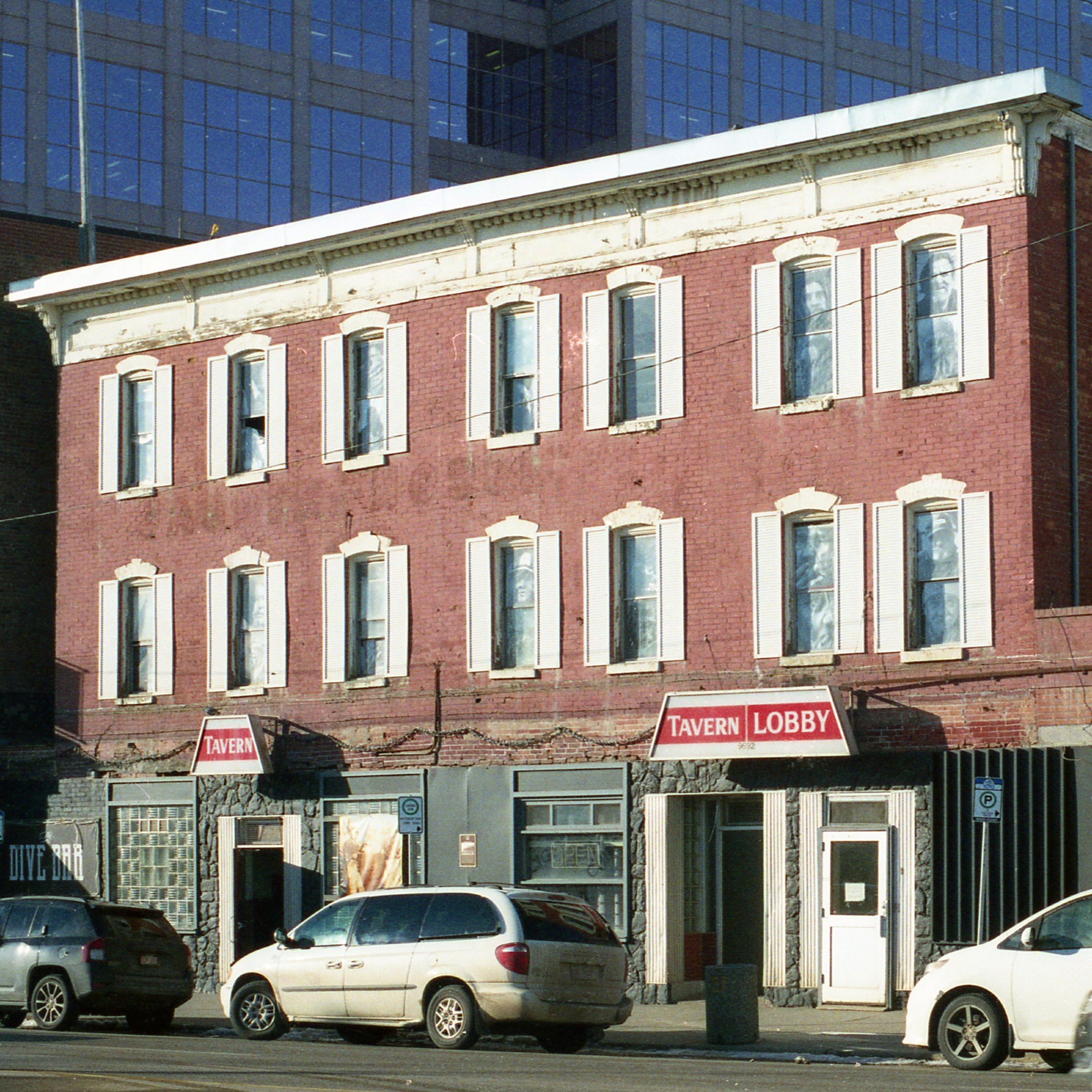The Second Latta Ravine Bridge
This Depression-era make-work project — Frankensteined together using spare girders and old streetcar rails — is counting the days until it’s replaced.
The 106th Avenue Triplets
Three homes and three stories from Central Edmonton’s Queen Mary Park.
The Kinnaird Ravine (Rat Creek) Bridge
Accusations of underpaid labour haunt this unassuming Depression make-work project.
The Edmonton Cycle Club
The Great Depression became a golden age for Edmonton’s cyclists. Along dusty city streets and gravel backroads, three clubs vied for civic and provincial championship titles. None were as successful as the Edmonton Cycling Club.
The Canadian Bank of Commerce
Downtown Edmonton’s C.I.B.C. stands as the city’s last pre-Second World War banking hall still used for its original purpose.
The Carnegie Library
In the words of Todd Babiak, our old central library “is one of the icons of a lost Edmonton, a phantom Edmonton, a victim of the boom-and-bust psychology that has defined the city since its earliest days.”
The Hawrelak Park Pavilions
A little slice of West Coast architecture hides in Edmonton’s William Hawrelak Park.
The Humanities Centre
Humanities Centre, in all its concrete glory, represents one of Edmonton’s best examples of the Brutalist style.
Stone’s Meat Market
Before Kind Ice Cream brought fame to this Highlands corner, another business did: Stone’s Meats.
The Jasper House (Hub) Hotel
It might not look like much, but beneath the ol’ Hub Hotel’s pockmarked walls and faux-stone facade hides the remnants of Jasper House, the first brick building between Vancouver and Winnipeg.
The Cavanagh / Hurtig Residence
Once home to a Great War amputee, Jewish-Romanian furriers, and an Order of Canada recipient, this unassuming Oliver Foursquare is living on bought time.
Sacred Heart Roman Catholic Church
Unequivocally Edmonton’s most handsome pre-war church, this building “conveys the impression of solemnity and sacred suggestion.”
The Stein Residence
Built in 1912, the Stein Residence is a good representative example of higher-class housing styles in Westmount, an area that “developed a reputation as the ‘place to be for the up and coming.”
The Gibbard Block
Built to house luxurious apartments, the Gibbard Block now houses offices and a slew of local eateries.
The Murder of Dorothy Hammond
Dorothy Hammond, a fourteen year-old schoolgirl, was walking home on November 15th, 1941, when she was suddenly attacked by a stranger — her killer stabbed her a dozen times. A two-day manhunt followed.
The Origins of H.M.C.S. Nonsuch
Edmonton’s “stone frigate” lived up to its motto, A Campis ad Maria — “from the prairies to the sea” — during the Second World War. Over its course this inland ship trained 3,582 sailors.
The Connaught Armouries
Alberta’s oldest purpose-built armoury was once home to mounted infantry. Saved from demolition, it’s now home to a non-profit.
Street Railway Substation No.600
It may be small, but 124th Street’s “stalwart brick castle” is one of the only reminders of Edmonton’s long-abandoned streetcar system.
The Queen Elizabeth II Planetarium
Canada’s first municipal planetarium is Edmonton’s greatest mid-century jewel.
The Haines / McIntyre Residence
This opulent home is one of some two-dozen pre-war mansions in the Groat Estates, a Glenora-like enclave east of the Groat Ravine.



















